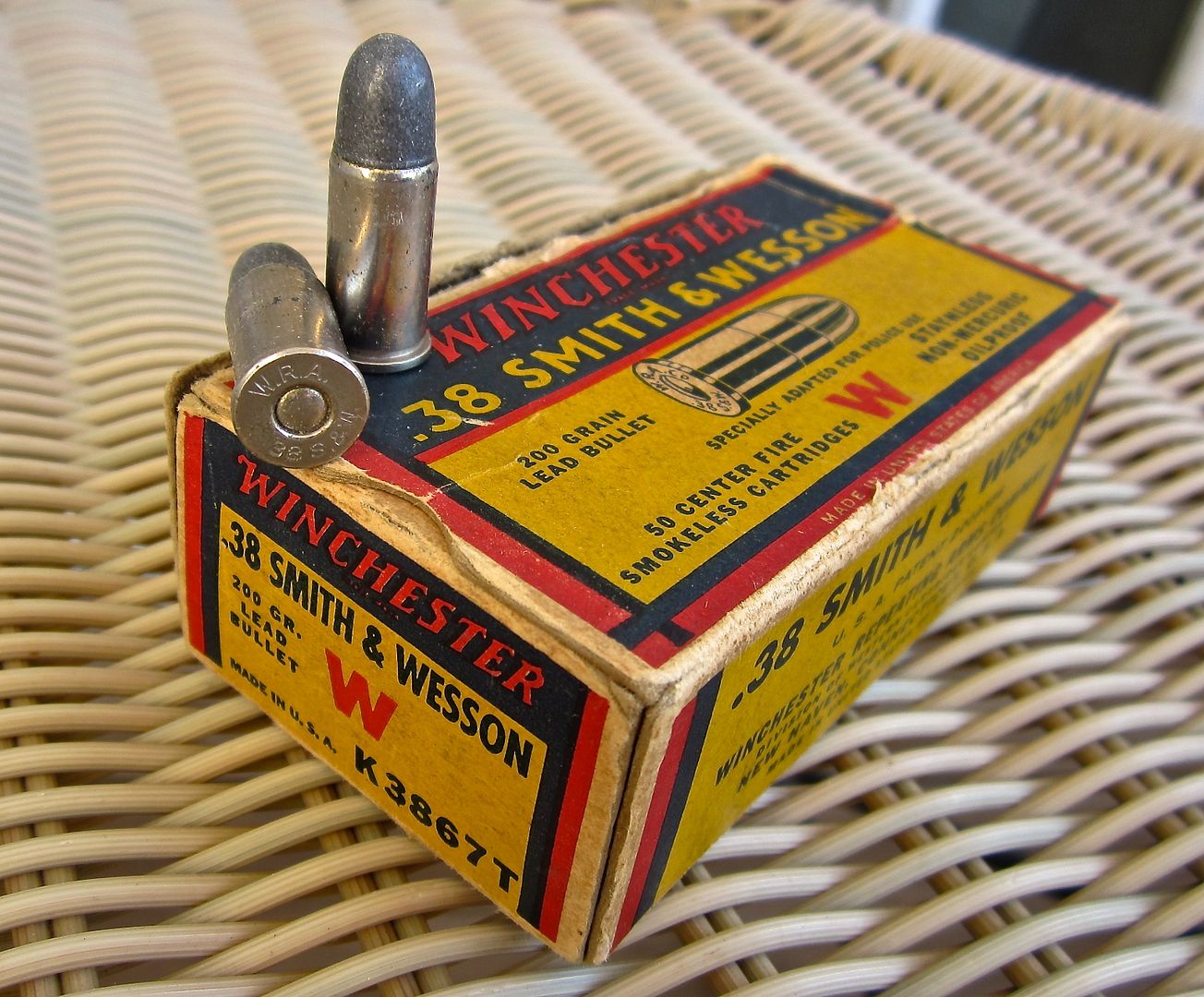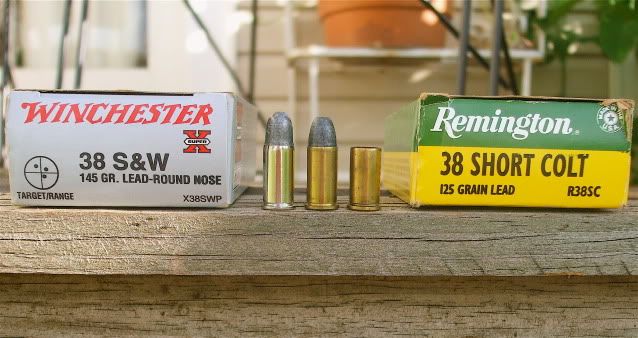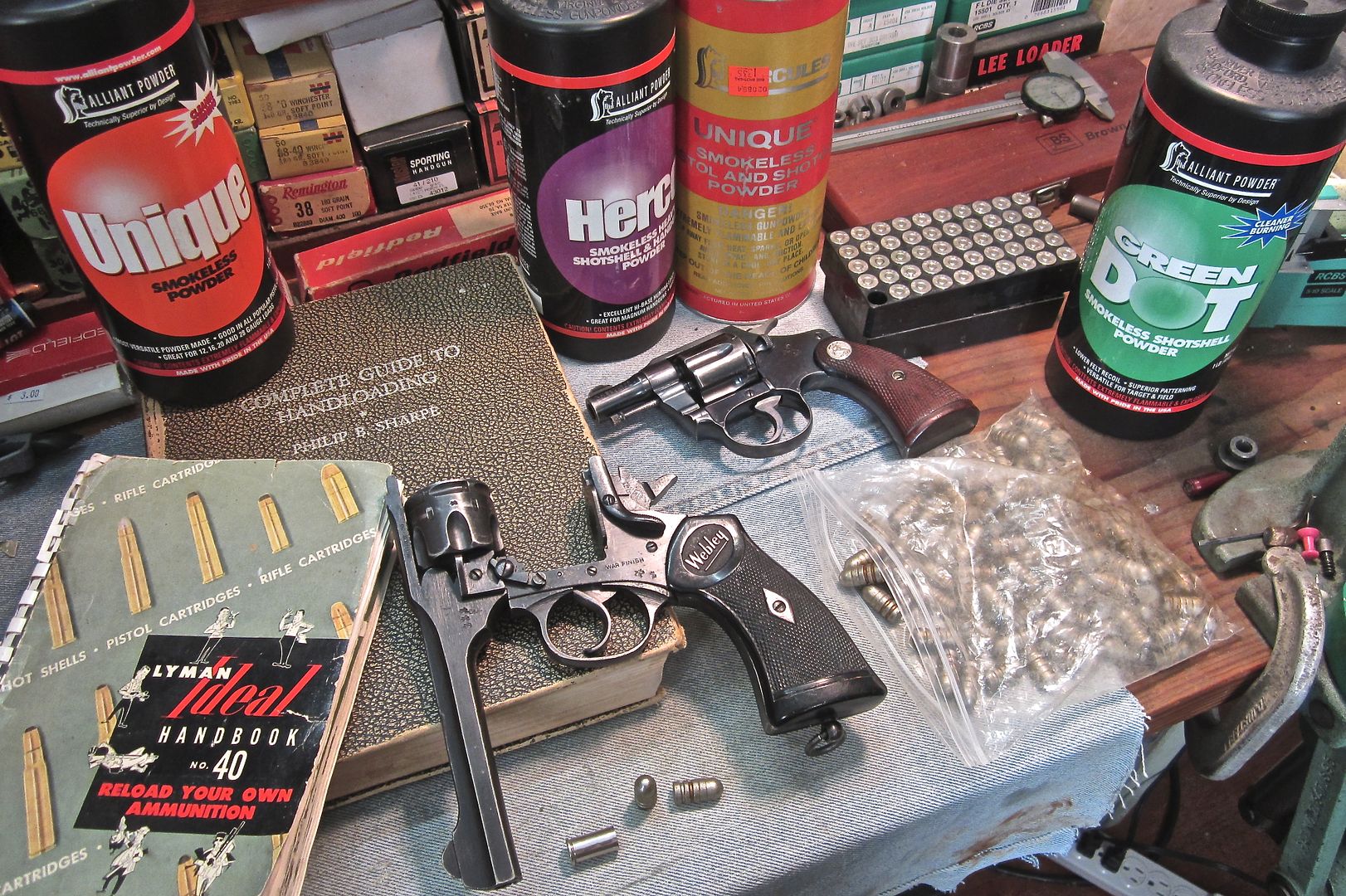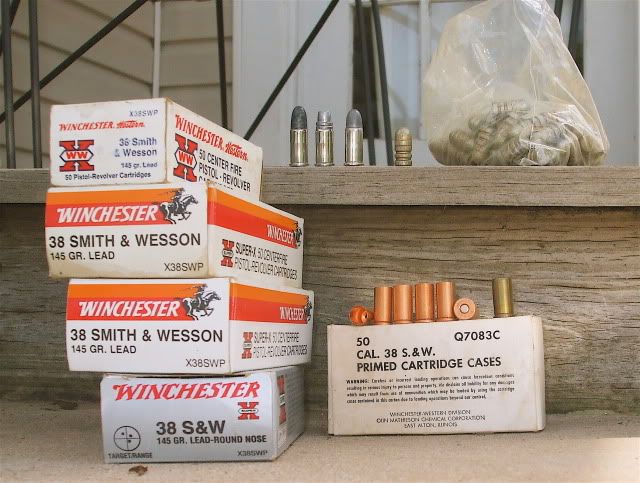Ol' Army buds.
Colt and Smith & Wesson Model 1917 .45s.

I set out to collect US military arms as a teen. Gathered many representative specimens before I married. It's amazing how expensive US military small arms have become.
Colt adopted the grand New Service revolver which was in current production at the time in order to provide M1917 revolvers to the War Department on contract. The Colt New Service was a popular revolver throughout the "teen years" with both commercial sales and foreign sales, especially to Great Britain and its Commonwealth. The New Service nailed down Colt's large-frame, big-bore presence in the double-action revolver market during those years so was in continuous production from 1899 to World War II.
The early Colt M1917s had simple bored-through chambers while most of the production had chamber throats like their Smith & Wesson counterparts.
The New Service is my very favorite Colt revolver model of all. I'd love to go down the rabbit hole and pursue the tangent of collecting them. Only two New Service revolvers live here, the Model 1917 and a uncommonly seen US military contract Model 1909 in .45 Colt. It's another gun on hand that makes the list of most gratifying guns that make me happy, but that's another story.

Colt and Smith & Wesson Model 1917 .45s.

I set out to collect US military arms as a teen. Gathered many representative specimens before I married. It's amazing how expensive US military small arms have become.
Colt adopted the grand New Service revolver which was in current production at the time in order to provide M1917 revolvers to the War Department on contract. The Colt New Service was a popular revolver throughout the "teen years" with both commercial sales and foreign sales, especially to Great Britain and its Commonwealth. The New Service nailed down Colt's large-frame, big-bore presence in the double-action revolver market during those years so was in continuous production from 1899 to World War II.
The early Colt M1917s had simple bored-through chambers while most of the production had chamber throats like their Smith & Wesson counterparts.
The New Service is my very favorite Colt revolver model of all. I'd love to go down the rabbit hole and pursue the tangent of collecting them. Only two New Service revolvers live here, the Model 1917 and a uncommonly seen US military contract Model 1909 in .45 Colt. It's another gun on hand that makes the list of most gratifying guns that make me happy, but that's another story.


















